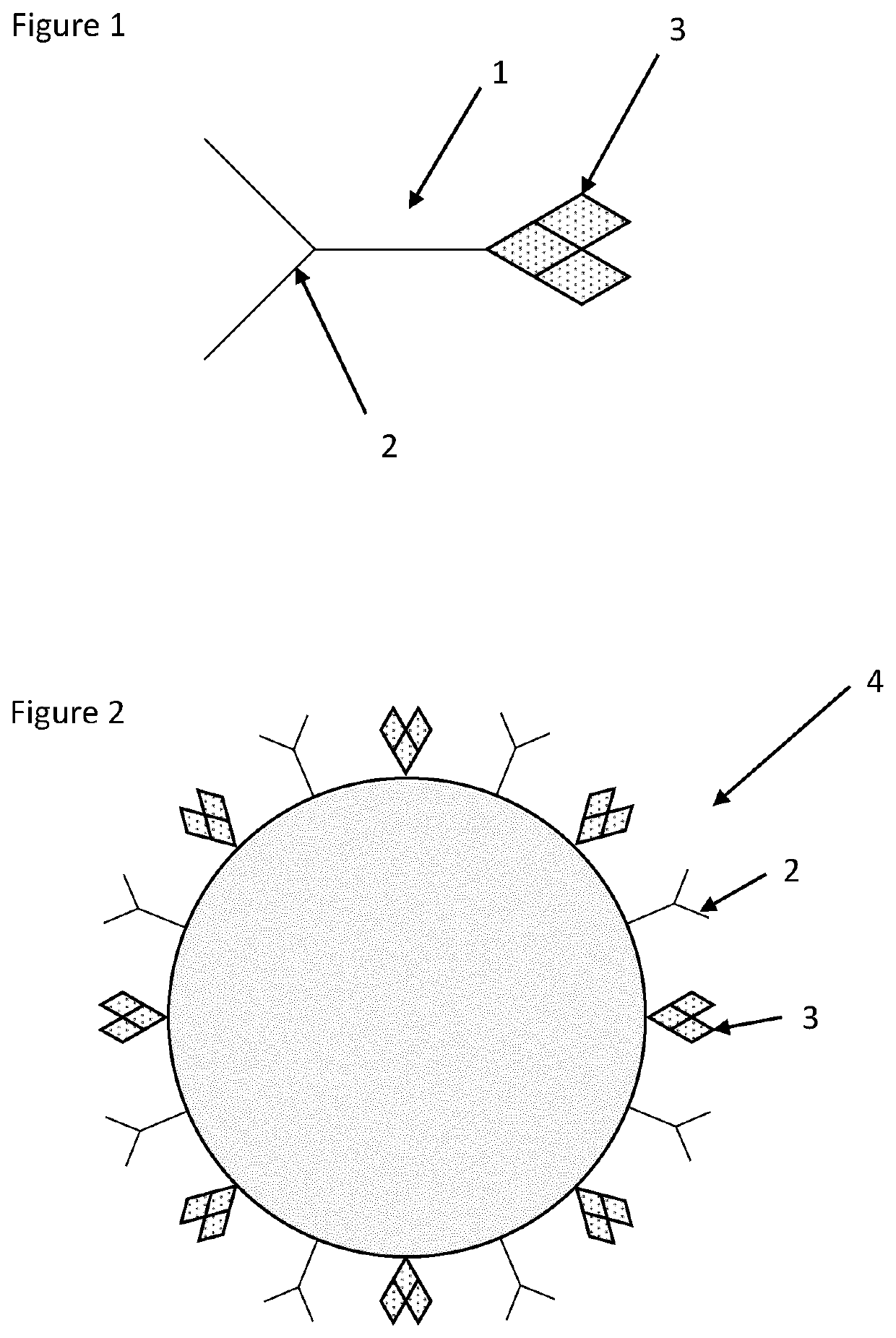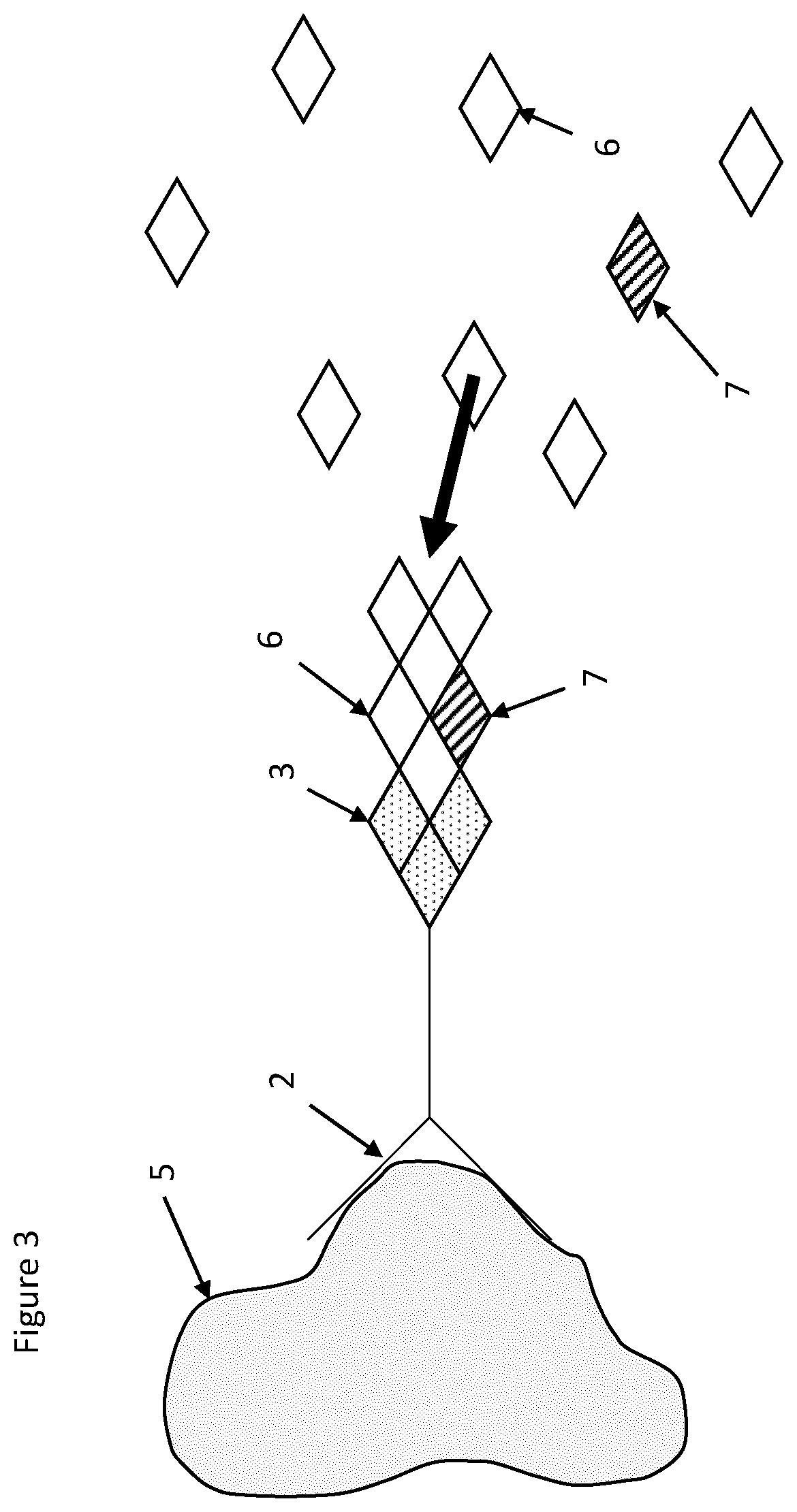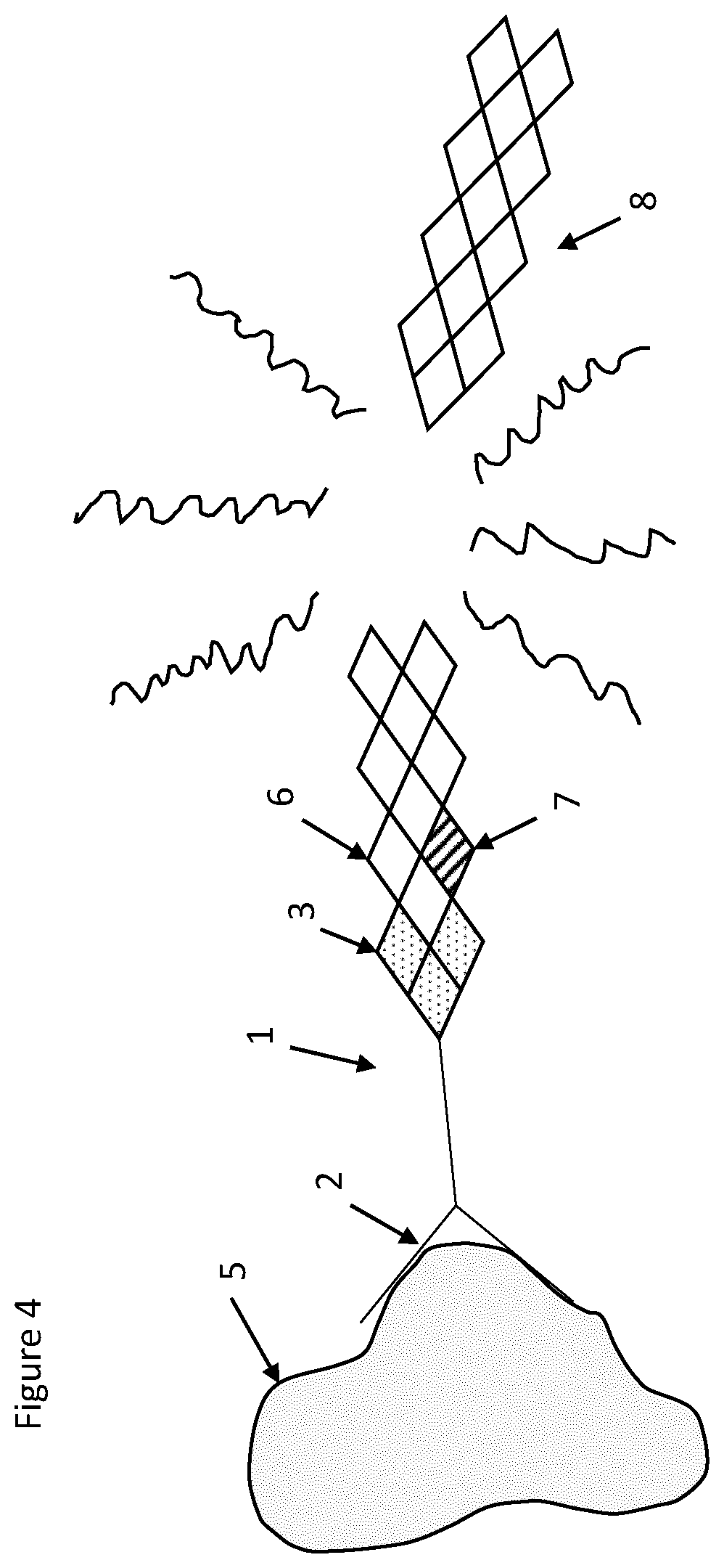Detection and Quantification of Molecular Species
a molecular species and detection technology, applied in the field of conjugates, can solve the problems of low signal-to-noise ratio, unreliable determination of presence or calculated concentration or amount, and less effective techniques such as elisa in measuring samples having very low concentrations of measured substances, so as to increase the overall rate of polymerisation in the system, the effect of increasing the number of free-ends of filaments and less tim
- Summary
- Abstract
- Description
- Claims
- Application Information
AI Technical Summary
Benefits of technology
Problems solved by technology
Method used
Image
Examples
first embodiment
[0071]FIG. 1 shows a schematic representation of a conjugate 1 according to the invention. On a first end of the conjugate 1 is an antibody 2. This antibody 2 is capable of specific binding to a pre-determined target at a first epitope thereof. Covalently linked to this antibody is an actin nucleus 3. It is to be understand that a non-covalent linkage could alternatively be used.
[0072]Because the conjugate 1 contains an actin nucleus 3, monomeric G-actin can spontaneously polymerise from this nucleus 3.
[0073]The actin nucleus is in the form of spectrin-actin seeds which only present a plus end of the actin for polymerisation while suppressing polymerisation from the minus end of the actin nucleus. This ensures that polymerisation can only occur from a single end of the actin nucleus which ensures that the polymerisation kinetics are more easily modelled.
second embodiment
[0074]FIG. 2 shows a schematic representation of a conjugate 4 according to the invention. The embodiment comprises a nanoparticle to which the antibody 2 and the actin nucleus 3 are bound. This embodiment illustrates that it is not particularly important how the antibody 2 and the actin nucleus 3 are attached to one another in the conjugate 1, simply that they are physically bound.
[0075]Use of the conjugate 1 of the first embodiment will now be described. A sample (not shown) containing a target substance or antigen 5 of unknown quantity is provided. An excess of the conjugate 1 is added to the sample at a concentration of between 1 nanomolar and 1 micromolar and mixed thoroughly, for example, by agitation. Subsequently, a plurality of magnetic beads, each linked to an antibody specific for a second epitope of the antigen 5 is provided and the plurality of magnetic beads is added to the sample. It is to be appreciated that the antibody 2 which is specific for the first epitope of t...
PUM
| Property | Measurement | Unit |
|---|---|---|
| frequency | aaaaa | aaaaa |
| frequency | aaaaa | aaaaa |
| frequency | aaaaa | aaaaa |
Abstract
Description
Claims
Application Information
 Login to View More
Login to View More - R&D
- Intellectual Property
- Life Sciences
- Materials
- Tech Scout
- Unparalleled Data Quality
- Higher Quality Content
- 60% Fewer Hallucinations
Browse by: Latest US Patents, China's latest patents, Technical Efficacy Thesaurus, Application Domain, Technology Topic, Popular Technical Reports.
© 2025 PatSnap. All rights reserved.Legal|Privacy policy|Modern Slavery Act Transparency Statement|Sitemap|About US| Contact US: help@patsnap.com



